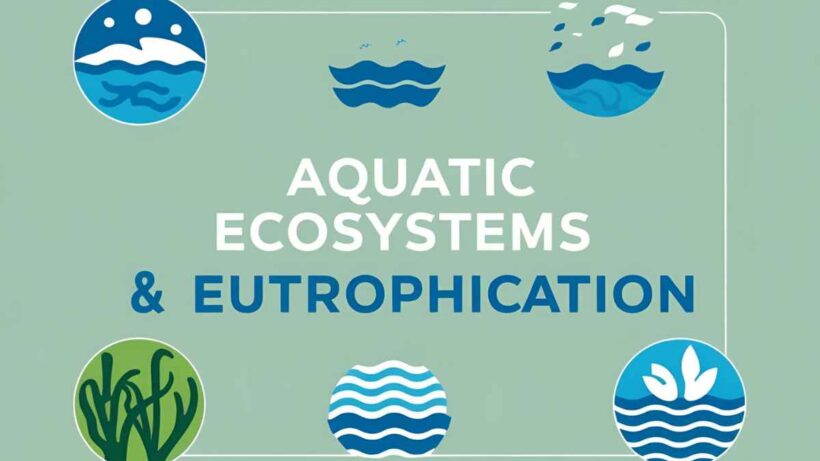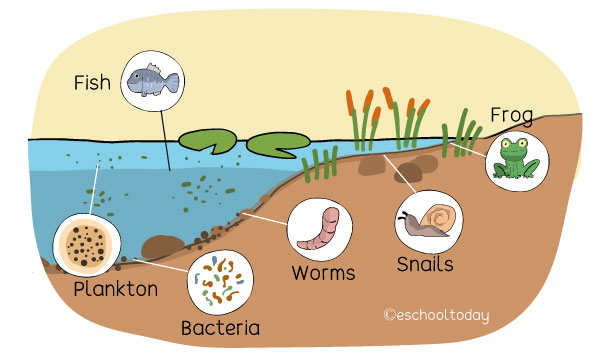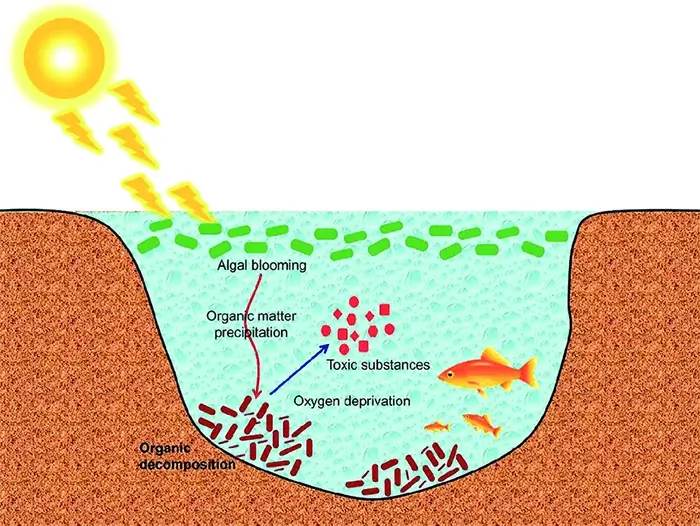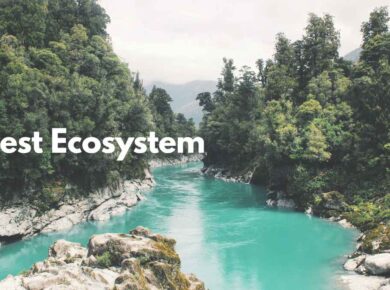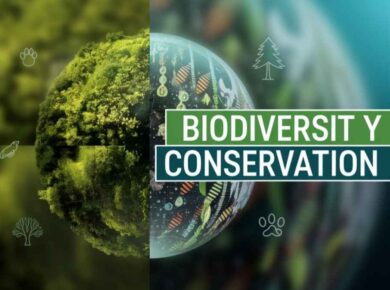Aquatic Ecosystems & Eutrophication
An aquatic ecosystem is an ecosystem in a body of water. Communities of organisms that are dependent on each other and on their environment live in aquatic ecosystems. The two main types of aquatic ecosystems are marine ecosystems and freshwater ecosystems.
- Not called biomes
- Differentiated on the basis of difference in
- Salinity
- Levels of dissolved nutrients
- Water temperature & depth of sunlight penetration
| Fresh Water Ecosystem |
|
| Marine Ecosystem |
|
| Brackish water ecosystem |
|
- Most important limiting factors of terrestrial ecosystem > moisture & temperature
- Most important limiting factors of aquatic ecosystem > sunlight & oxygen
Aquatic Organisms – Flora & Fauna
| Neuston | unattached organisms living at air-water interface |
| Periphyton | organisms which remain attached to stem & leaves of rooted plants emerging above the bottom mud |
| Planktons | Microscopic plants (phytoplankton like algae) & animals (Zooplankton like protozoan & crustaceans) |
| Nektons | Animals which swim (from small insects to whales) |
| Benthos | Organisms living in the bottom of water mass |
Major factors affecting productivity of Aquatic habitats
Photic or euphotic zone
- Depth of the water in a lake or ocean that is exposed to sufficient sunlight for photosynthesis to occur.
- Depth of this zone depends on transparency of water & generally extends till 200 m from the surface (At 200 m approx. 1 % of light compared to surface)
- Both respiration & photosynthesis activity takes place
Aphotic or Profundal zone
- Portion of a lake or ocean where there is little or no sunlight, formally defined as the depths beyond which less than 1% of sunlight penetrates
- Bioluminescence is essentially the only light found in this zone
- Plant growth is restricted as light level is too low for photosynthesis, hence only respiration occurs.
Lakes
- Standing water over a large area (more than 10 hectares)
- At least 3 m of depth with little aquatic vegetation
- Receives water from surface runoff & sometimes from ground discharge
- Based on level of salinity lakes are known as Freshwater, Brackish or Saline lakes
- Based on nutrient content lakes are classified as
- Oligotrophic > Very low nutrients
- Mesotropic > Moderate nutrients
- Eutropic > High nutrient content
- Natural Eutrophication > Along with surface runoff various chemical substances & minerals mingle in its water leading to nutrient enrichment of lakes, which promotes growth of algae, aquatic life & various fauna.
- Cultural Eutrophication > Similar nutrient enrichment of lakes at an accelerated rate, caused by human activities (Discharge of wastewater or agricultural runoff) promotes algae bloom leading to depletion of aquatic life.
Eutrophication
- Enrichment of an aquatic system by addition of nutrients, primarily phosphates & nitrates runoffs from chemical fertilizers.
- Nutrient enrichment accelerates the growth of algae which soon covers almost entire surface layer, known as algae bloom.
- Algae bloom restricts the penetration of sunlight, which restricts process of photosynthesis among underwater plants, leading to depletion of oxygen >>> Death of aquatic organisms.
- Depletion of oxygen also occurs due to decomposition of dead algae by microorganisms which require oxygen for decomposition process.
- New anaerobic condition also promotes growth of bacteria (clostridium botulinum) which produces toxins deadly to aquatic organisms, birds & mammals.
- Harmful Algae bloom is commonly known as red tide, which is basically a misnomer as blooms are not always red in color & certainly not associated with tides, scientifically referred as Harmful algal blooms (HABs)
- Common cause for algae blooms are nutrient enrichment of water (esp. of nitrates & phosphates) & rise in water temperature
- Some HAB toxins can become airborne during a bloom & people can become ill by inhaling them.
For more updates, explore the Environment category. Feel free to share your thoughts and comments
If you’re passionate about building a successful blogging website, check out this helpful guide at Coding Tag – How to Start a Successful Blog. It offers practical steps and expert tips to kickstart your blogging journey!
